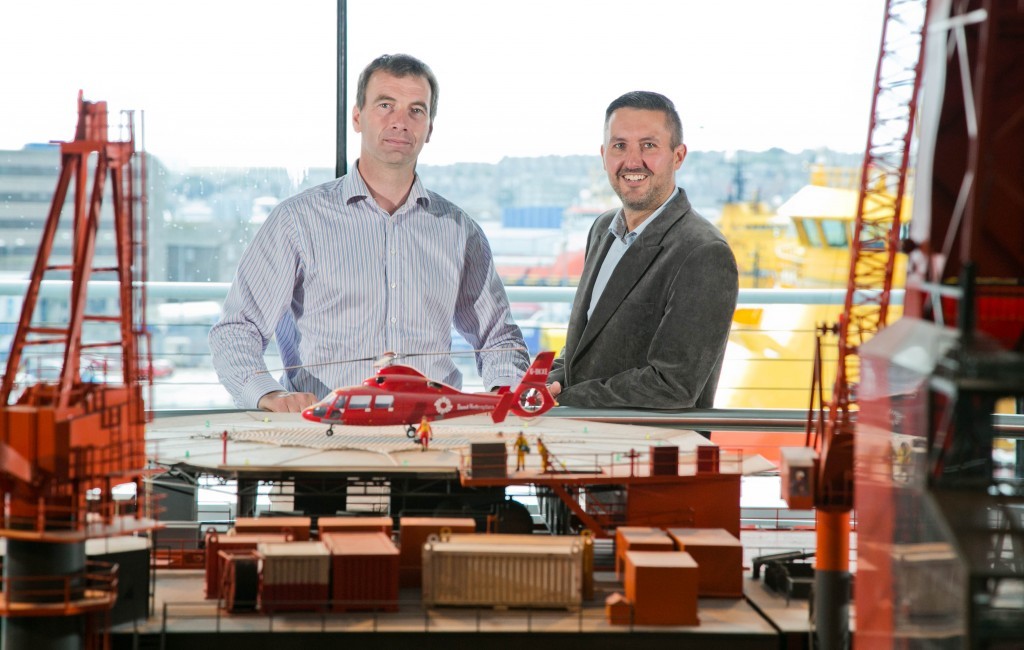
An Aberdeen technology firm has taken inspiration from guided missile military technology to create a new well intervention system that could radically alter the way the industry operates, whilst saving companies millions of pounds.
The Holy Grail of innovation – saving time and money – is what Well-SENSE- a downhole solutions provider – believes has found with its Fibre Line Intervention (FLI) technology, which they claim is a radical advance for the ageing downhole tool industry.
Well-SENSE was founded in June 2015 by technical director Dan Purkis and fellow director Paul Higginson.
Purkis, Well-SENSE’s technology director, has more than 50 patents to his name lodged over 20 years in the oil and gas industry.
Companies have been acquired based on his technologies, some of which are now cornerstone product lines of multinational companies, Halliburton and Weatherford.
Fibre Line Intervention (FLI) was inspired by military and aerospace technology – specifically the wire guided missiles used by the armed forces.
Purkis believes FLI has the capacity to shake up the industry.
“The basic infrastructure of well intervention—coil tubing, electric line and slick line—was invented over 50 years ago. It requires expensive, hefty equipment which costs operators millions of pounds and work hours,” he said.
“We wanted to take an open-source collaborative approach to development and we considered how technology giants, like Google or Apple, would troubleshoot the current problems of intervention,” said Higginson.
The company says FLI does away with the expense by replacing the tool infrastructure with a compact, low cost, disposable alternative.
“It will turn intervention, as we know it, on its head,” said Purkis.
The modern wire guided missile was originally developed by the military as an anti-tank weapon in the early 1970s.
Purkis said: “A modern missile can travel at 800km/h at a range of 10km, whilst maintaining real time fibre-optic communication between cameras, thermal imaging, magnetic sensors, pressure, speed as well as the missile’s on board guidance system.”
FLI is a missile-based disposable method of intervention. It allows operations to be performed more efficiently, with less risk, and eliminates the need for three quarters of the intervention personnel and nearly all of the heavy equipment and associated mobilisation costs.
FLI incorporates three key game-changing design functions to create a disposable, low-cost system.
Firstly, the large and expensive traditional surface spooling unit is replaced by a miniature fibre-optic spooler in the rear of the tool. The fibre-optic is so small in diameter that 10,000ft takes up no more space than a can of baked beans.
Secondly, the tool is allowed to fall into the well, paying the fibre-optic out of the rear of the tool. The military has used a similar technology for more than 40 years to deploy wire-guided missiles. Well-SENSE applies the technology to the energy industry.
Thirdly, the tool is not recovered. FLI makes use of modern biodegradable polymers and water soluble metal alloys to construct a disposable tool, which means it does not need to be recovered from the well.
“After a few days the tools dissolve, leaving only a tiny trace. Each tool is used just once to its maximum depth and then abandoned,” he said.
“Not recovering the tool from the well removes many of the risks associated with current intervention methods such as getting stuck, snapping the wire, or dropping the tool string.
When the job is complete the fibre optic is either left in the well to degrade or can be stripped out.”
Well intervention, which can currently cost operators millions of pounds, could feasibly be done for a few thousands pounds.
Higginson said: “As a disposable tool, FLI doesn’t have to be recovered. Operators can use FLI to access previously unthinkable depths without fear of getting stuck.
“This would enable production optimisation operations to be performed on wells formerly deemed technically impossible or economically unviable.”
Well-SENSE has applied for patents and secured all the intellectual property to ensure the business is protected.
Fibre optics also allow raw data to be streamed back to the surface at significantly higher rates compared to the best available E-line system.
It could significantly improve image quality of downhole cameras and deploy fibre optic Distributed Temperature Sensing (DTS), as well as the newly emerging fibre optic, Distributed Acoustic Sensing (DAS).
FLI could be used to run perforating guns, tubing punches, pipe cutters, logging tools and near well bore stimulation tools, as well as many other tools.
Higginson said: “We’ve tried to cast aside all preconceptions of intervention and sourced technology from outside industry. The spool in the tool comes from the military, the new heat shield comes from space shuttle batteries, the electronics come from smart phones and toy radio controlled helicopters and the bio degradable plastics come from the burgeoning new industry of plastic recycling and disposal.”
It can be deployed by a “man and suitcase” – one operator carrying a small, highly portable piece of kit.
Purkis and Higginson are looking to field test the system this year, but admit to feeling frustrated at the slow pace of adoption, a criticism that has long been levelled at the oil and gas industry where there remains a “race to be second” and where risk aversion has been turned into an art form.
Purkis said: “The main barrier is ultimately changing industry mind-set. FLI is a radical departure from the current and accepted methods of intervention; it breaks many rules which have been embedded over the past 50 years.
“We’ve talked to all the big operators, who told us they loved what we are doing, but no-one is backing us by offering a field test.”
Recommended for you
